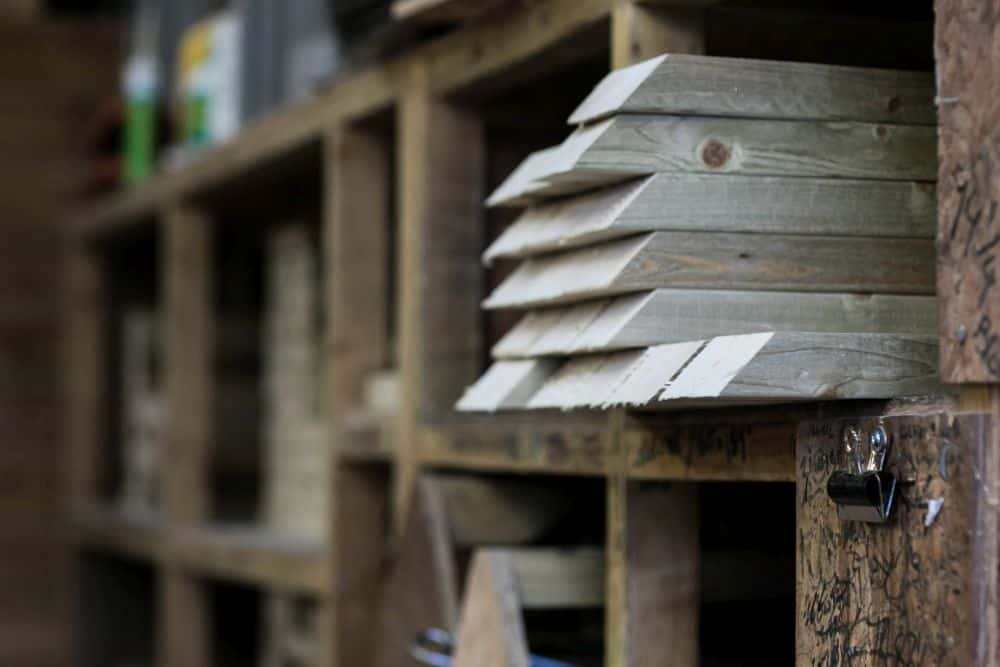For those of us that work in the construction industry, particularly those of us that work directly with timber, the terms C16 and C24 are illustrious. However, if you are new to working with timber, or you just need a recap on what these two terms mean, read on.
Both C16 and C24 refer to the strength of a piece of timber. Carcassing timber to be precise. Within UK construction, there are twelve different grades that illustrate the strength of timber which are set out by the British Standard in the BS 5268 (a compendium of codes covering the structural use of timber).
As a household name in stables and bespoke timber buildings we have been working with Tanalised® quality timber day in, day out for over 40 years. Using our experience, we take a closer look at what C16 and C24 carcassing timber are, and their similarities and differences.
What is carcassing timber?
Carcassing is the name given to timbers processed for use in structural applications such as roof battens, treated timber floor joists and studwork, or for any purpose where a grading stamp is required. Carcassing timber is softwood that has been kiln-dried and treated and then graded according to its strength quality of C16 or C24, before being labelled with the relevant grading mark set by the BS 5268.
Which factors determine how timber is graded?
Timber grades mark the strength of timber to help users find the right type for their needs. Understanding timber grades is important to ensure you use wood of suitable strength, moisture content and aesthetic. As we mentioned earlier, timber grading for UK construction is set by the British Standard (BS-5268). There are twelve official strength grades as set by the British Standard BS 5268, but the two most common are C16 and C24.
When grading timber against the British Standards guidelines, various measurements and factors are considered to assess and determine the strength of the wood including:
- Knots
- Splits along the grain
- The slope of the grain
- Woodworm holes
What does C16 graded timber?
Timber with strength grade C16 is kiln dried to minimise the amount of moisture in the wood. This provides it with increased strength while simultaneously allowing it to compressed and pliable enough for use in construction. The C stands for conifer, the tree type the timber originated from, while the 16 refers to the strength grade.
C16 is one of the most used types of timber in the UK mainly because it is strong, versatile, and relatively cost effective, but it also has some defects including occasional deviations in the grain, sap stains and uneven surfaces, hence the reflection in its cost.
What does C24 graded timber mean?
Just like C16 timber, the C stands for conifer and the 24 refers to the strength grading of the timber. C24 is a superior grade to C16 signifying its greater strength, resilience, and appearance in general. C24 is idea for supporting heavy loads and wide expanses. C24 is usually taken from trees growing in areas where the climate forces slower growth, resulting in a tighter grain.
Like C16, this grade of timber is also kiln-dried to reduce the moisture content and typically boasts fewer defects thanks to the tighter grain. It not only makes it stronger and more resilient, but aesthetically it is much more pleasing too. Hence why it is so popular for projects where the wood is going to be visible or a prominent feature.
As with most things, quality comes at a higher price and C24 timber is no exception.
C24 vs C16 – the main differences summarised
As we have discussed, there are several differences between C16 and C24 timber. The main ones being:
- Quality
Both grades are strong, durable, and popular in modern construction. However, C24 offers superior quality. - Appearance
C16 can have some defects, while C24 typically has less obvious defects making it a better fit for projects where the wood is highly visible. - Strength
Both grades can handle the typical demands of most construction projects. However, C24 timber offers premium strength making it preferable for bigger projects where strength is critical. - Price
If you can cope with a few defects and your project is on the smaller side with now wide expanses to cope with, C16 timber is typically more cost-effective due to its easy availability and strong demand. C24 grade timber is slightly more expensive due to its premium quality, strength, and importation from suitable growth climates.
Did you know?
- All the graded timber at Nationals has been kiln-dried and then pressure treated with Tanalith® E wood preservative which has a proven long-term protection from wood decay and insect attack, meaning anything constructed with treated tanalised® timber will be able to withstand extreme weather conditions and stand the test of time. Our pressure treated timbers are high performing, durable and sustainable, and can be used for a wide range of applications.
- At Nationals, we use minimum grade C16 (treated) timbers for framing and rafters.
- All graded timber will have a C16 or C24 mark on it. So, if you cannot see the mark, do not use it.
- If timber is re-sawn in its cross-section or thickness, then its strength grade could be lost. Both resulting pieces of timber will need to be re-graded before they can be used.
Don’t forget, when you buy from us you do not just receive a timber building – you receive a timber building that is:
- Tanalised®
- Galvanised
- Bespoke
- Traditionally made
- Quality checked.
Our quality never falters. We are not the cheapest on the market, but we’re certainly the best value. Why not request a brochure today to see how we can help?

Get in touch
Want to know more about choosing low-cost, high-quality stables? We’re happy to answer all your questions. Call 01233 884502, email info@nationalstables.co.uk or send us a message and we will respond ASAP.





